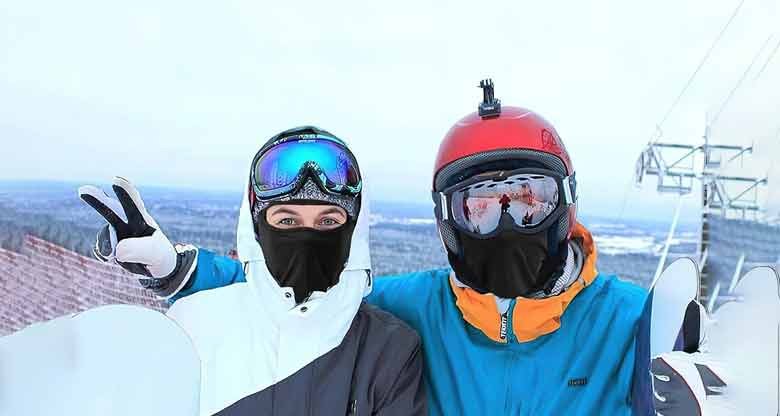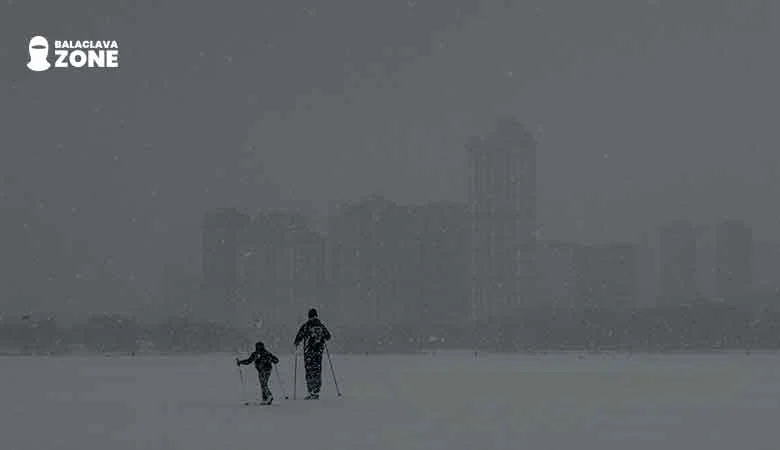Introduction
Imagine you’re outside on a freezing winter day. The wind is biting, and snowflakes are swirling around you. You need something to keep your head and face warm, but you’re not sure whether a balaclava or a ski mask is the better choice. Knowing the differences between these two winter clothes can greatly improve your comfort and warmth.
In this blog post, we’ll explain what makes balaclavas and ski masks different. We’ll look at how each one is designed, when you might want to use each type, and which one could be the best fit for your needs. By the end, you’ll know exactly which winter accessory will keep you cozy in the cold. Let’s dive in!
Definitions and Basic Concepts
What is a Balaclava?

A balaclava is a type of warm headgear that covers your entire head, neck, and sometimes part of your face. It looks like a snug, stretchy hood that wraps around your head and neck.
People often make balaclavas from materials like wool, fleece, or special synthetic fabrics. They are great for keeping you warm in extremely cold weather.
Detailed Look at What is a Balaclava? Ultimate Guide to This Cozy Accessory
What is a Ski Mask?

A ski mask, also known as a face mask or a snow mask, is a piece of winter gear that covers your face and neck. It usually leaves your eyes, mouth, and sometimes nose exposed. People commonly make ski masks from materials like thermal fabric or other synthetic materials. These products are designed to keep your face warm while skiing or snowboarding.
Key Differences
Coverage and Design
Balaclava
- A balaclava covers your entire head, neck, and often part of your face. It usually has openings for your eyes, mouth, and sometimes your nose.
- It’s designed to keep you warm by covering more of your body.
- You can wear it under helmets for extra warmth.
Ski Mask
- A ski mask covers just your face and sometimes your neck. It typically leaves your eyes, mouth, and nose exposed.
- It’s usually made for comfort during skiing or snowboarding, so it might not cover as much as a balaclava.
- It can be worn alone or with a helmet for added warmth.
Functionality and Use
Balaclava
- Balaclavas are great for very cold conditions because they cover more of your body.
- They are versatile and can be used for various outdoor activities, like hiking, climbing, or extreme cold weather.
Ski Mask
- Ski masks are designed mainly for skiing and snowboarding. They keep your face warm while allowing you to breathe easily.
- They are less about full coverage and more about comfort and breathability during high-energy activities.
Comfort and Fit
Balaclava
- Balaclavas usually fit snugly around your head and neck. They can be adjusted for a better fit.
- Because they cover more area, they provide more warmth but can feel bulkier.
Ski Mask
- Ski masks often have a more flexible fit around your face, which can be more comfortable for activities where you move a lot.
- They may not cover as much of your head or neck, which can be good for keeping cool when you’re active
Knowing the differences between winter gear can help you pick the best option for your activities. Understanding the differences in winter gear can help you choose the best option for your activities. You might need a balaclava for full coverage or a ski mask for warmth. Knowing these choices will make your cold-weather experiences more enjoyable.
Practical Applications
Outdoor Activities
Balaclava
- Mountaineering and Ice Fishing: Balaclavas are perfect for extreme cold environments. They cover you completely to keep you warm in harsh weather conditions.
- Winter Hiking and Camping: Should you venture out in extremely chilly conditions, a balaclava will safeguard your head, neck, and face from the freezing temperatures.
Ski Mask
- Skiing and Snowboarding: Ski masks are designed specifically for winter sports. They keep your face warm but allow you to breathe easily and move comfortably while you’re on the slopes.
- Winter Running and Cycling: For high-energy activities like running or biking in the winter, a ski mask is great because it covers your face but doesn’t feel too bulky.
Everyday Use
Balaclava
- Casual Winter Outings: Balaclavas can be worn for everyday activities like walking or commuting in very cold weather. They offer great warmth and protection.
- Work in Cold Conditions: If you work outside in cold weather, a balaclava will help keep you warm throughout your shift.
Ski Mask
- Quick Errands and Everyday Chores: Ski masks are handy for short trips outside or quick errands in chilly weather. They keep your face warm without covering too much of your neck or head.
- Sports and Recreation: For casual winter sports or activities, a ski mask provides comfort and warmth without being too bulky.
Choosing between a balaclava and a ski mask depends on what you’ll be doing and how cold it is. Balaclavas are great for full coverage in extreme conditions, while ski masks are perfect for active winter sports and everyday use
Choosing the Right Gear
Factors to Consider
Climate and Weather
- Extreme Cold: If you’ll be in very cold weather, a balaclava is usually a better choice because it provides full head and neck coverage. It keeps you warm in harsh conditions.
- Milder Cold: For less extreme cold, or if you’re more active, a ski mask might be enough. It covers your face while allowing for better breathability.
Activity Level:
- Low to Moderate Activity: If you’re doing activities like hiking or working outside in the cold, a balaclava offers great warmth and coverage.
- High Activity: For activities like skiing, snowboarding, or running, a ski mask can provide comfort and keep your face warm without overheating. It’s designed to handle higher energy levels and movement.
Personal Preference:
- Coverage: If you prefer having more coverage, especially around your neck, a balaclava is the way to go. It keeps more of you warm and protected.
- Comfort and Style: If you want something less bulky and more breathable, a ski mask might suit you better. It’s also designed for ease of movement and comfort during active sports.
Recommendations
Balaclava
- Choose a balaclava if you need comprehensive warmth and protection in very cold conditions. It’s versatile and works well for a variety of outdoor activities and extreme weather.
Ski Mask
- Go for a ski mask if you’re focused on winter sports or high-energy activities where you need warmth but also want breathability and less bulk.
Conclusion
In summary, both balaclavas and ski masks serve important roles in winter gear, but they have distinct differences. A balaclava provides full head and neck coverage, making it ideal for extreme cold and versatile outdoor activities. A ski mask provides comfort and breathability during high-energy winter sports.
Choosing the right gear depends on your specific needs and activities. Knowing the difference between a balaclava and a ski mask can help you stay warm and comfortable in cold weather.



